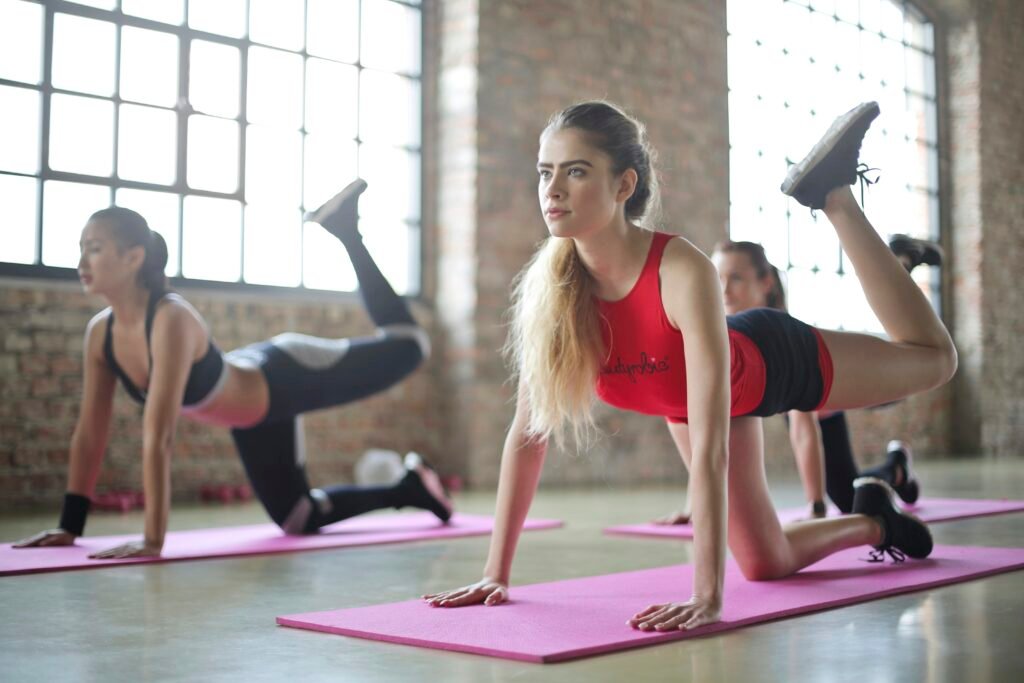Understanding Fitness
Fitness is a term that is often thrown around, but do you really understand what it means? In essence, fitness refers to the ability of your body to perform physical tasks efficiently. It is not just about going to the gym or exercising, but rather a holistic approach towards a healthy lifestyle.
Components of Fitness
When it comes to fitness, there are four main components that you should focus on: cardiovascular endurance, muscular strength, muscular endurance, and flexibility.
Understanding these components and how they work together is crucial for developing a balanced fitness routine. It’s not just about lifting weights or running on a treadmill; you need to target different aspects of your fitness to achieve overall wellness.

Cardiovascular Endurance
Cardiovascular endurance refers to the ability of your heart, lungs, and blood vessels to deliver oxygen to your body’s tissues during sustained physical activity. In simpler terms, it is how efficiently your body can keep moving without getting tired.
Improving your cardiovascular endurance can help reduce the risk of heart disease, stroke, and other cardiovascular issues. Activities like running, swimming, cycling, and dancing are great ways to boost your cardiovascular fitness. Remember, the key is to get your heart rate up and keep it up for an extended period.
Muscular Strength
Muscular strength is all about how much force your muscles can generate in a single effort. It is crucial for everyday activities like carrying groceries, lifting heavy objects, or even maintaining good posture.
Incorporating strength training into your fitness routine is essential for building and maintaining strong muscles. Exercises like weightlifting, bodyweight exercises, and resistance band workouts can help you increase your muscular strength over time.
Muscular Endurance
While muscular strength focuses on how much force your muscles can generate, muscular endurance is about how long they can sustain that force. It is what allows you to perform repetitive movements or hold a position for an extended period without getting fatigued.
Improving your muscular endurance is beneficial for activities that require sustained effort, such as running a marathon, hiking long distances, or even doing household chores. Including high-repetition strength training exercises or circuit workouts in your routine can help enhance your muscular endurance.
Flexibility
Flexibility refers to the range of motion in your joints and muscles. It is essential for maintaining proper posture, preventing injuries, and performing activities that require a full range of motion.
Incorporating stretching exercises like yoga, Pilates, or dynamic stretching into your routine can help improve your flexibility over time. Remember that stretching should be done when your muscles are warm to prevent injury, so it’s best to incorporate it at the end of your workout.

Designing Your Fitness Routine
Now that you understand the components of fitness, it’s time to design a routine that works for you. Remember that everyone’s fitness journey is unique, and what works for someone else may not work for you.
Setting Goals
Before starting any fitness routine, it’s essential to set clear and achievable goals. Whether you want to lose weight, gain muscle, improve endurance, or simply feel healthier, having specific goals will help you stay motivated and track your progress.
Choosing Activities
When designing your fitness routine, choose activities that you enjoy and that align with your goals. Whether it’s running, weightlifting, yoga, or dance classes, finding activities that you look forward to will make it easier to stick to your routine in the long run.
Balancing Components
To create a well-rounded fitness routine, make sure to include activities that target all four components of fitness: cardiovascular endurance, muscular strength, muscular endurance, and flexibility. Mixing up your workouts with different types of exercises will help prevent boredom and keep your body challenged.
Progressing Safely
As you progress in your fitness journey, it’s essential to listen to your body and progress at a safe pace. Gradually increase the intensity, duration, or frequency of your workouts to avoid injury and allow your body to adapt to the new demands.
Tracking Your Progress
Tracking your progress is crucial for staying motivated and making adjustments to your fitness routine as needed. There are several ways to track your progress effectively:
Keeping a Fitness Journal
A fitness journal can be a valuable tool for tracking your workouts, noting your progress, and identifying areas for improvement. You can record details like the type of exercise, sets and reps, duration, intensity, and how you felt during the workout.
Using Fitness Apps
Fitness apps are convenient tools that can help you track your workouts, monitor your progress, set goals, and even connect with a community of like-minded individuals. There are countless fitness apps available for different types of activities, so find one that fits your needs and preferences.

Creating a Balanced Diet
Fitness is not just about exercise; nutrition plays a crucial role in achieving your fitness goals. A balanced diet provides your body with the necessary nutrients to fuel your workouts, support muscle growth, and promote overall health.
Macronutrients
Macronutrients are the building blocks of your diet and include carbohydrates, proteins, and fats. Each macronutrient plays a specific role in your body and should be consumed in proper proportions to support your fitness goals.
Micronutrients
Micronutrients are essential vitamins and minerals that are required in smaller amounts but are equally important for overall health. Including a variety of fruits, vegetables, whole grains, and lean proteins in your diet can help ensure that you are getting an adequate intake of micronutrients.
Hydration
Proper hydration is essential for optimal fitness performance and overall health. Water plays a vital role in regulating body temperature, transporting nutrients, and removing waste from your body. Remember to drink an adequate amount of water throughout the day, especially before, during, and after exercise.
Rest and Recovery
Rest and recovery are often overlooked but are crucial components of any fitness routine. Your body needs time to repair and rebuild muscles, replenish energy stores, and adapt to the stress of exercise.
Sleep
Quality sleep is essential for recovery, muscle repair, hormone balance, and overall well-being. Aim for 7-9 hours of uninterrupted sleep each night to allow your body to rest and recover effectively.
Active Recovery
Incorporating active recovery activities like gentle stretching, yoga, walking, or swimming can help promote blood flow, reduce muscle soreness, and enhance recovery between workouts. Active recovery sessions should be low-intensity and focus on movement and flexibility.
Rest Days
Rest days are just as important as workout days. Giving your body a break from intense exercise allows it to recover, reduce the risk of overtraining, and prevent burnout. Use rest days to relax, recharge, and focus on other aspects of your life.
Conclusion
Fitness is not a one-size-fits-all concept but rather a personalized journey towards a healthier and happier lifestyle. By understanding the components of fitness, designing a well-rounded routine, tracking your progress, fueling your body with a balanced diet, and prioritizing rest and recovery, you can achieve your fitness goals and maintain long-term success. Remember, consistency is key, and small progress is still progress. Embrace the process, listen to your body, and enjoy the benefits of a fitter, stronger, and healthier you.